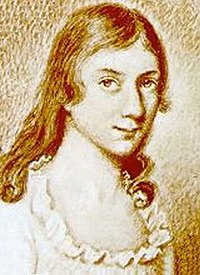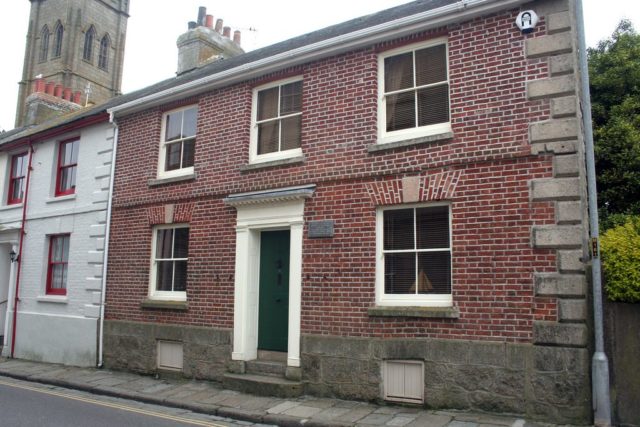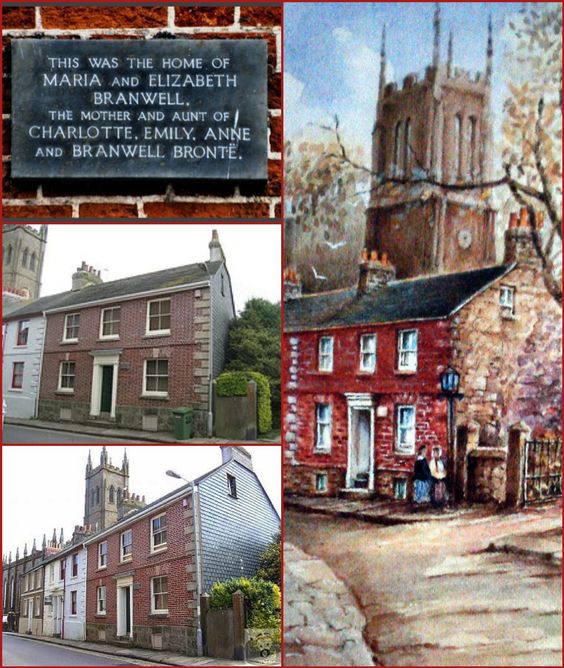On 15th April 1783, the eighth of eleven children of Thomas Branwell and Anne Carne, Maria Branwell, was born in Penzance, Cornwall. Thomas was a successful merchant with extensive property in the town. He was a leading political as well as religious figure and The Branwells were Methodists.
Table of Contents
Background and Early Life of Maria Branwell
They played a vital role in building the first Wesleyan Methodist chapel in the town of Penzance. Five of Thomas’ eleven children passed away before reaching adulthood, and even though Maria was one of those who lived to see adulthood, she did not live a very long life.

Maria grew up to be a petite, plain, pious, and intelligent lady, who was well-read and sharp-witted. She was easy going and did not have much difficulty making new friends. She was a loving woman and showed loyalty, creativity, and excellent handling of family responsibilities.
Maria Branwell – Death in the family
When she was in her mid-twenties, Maria’s parents and two siblings passed away within four years of each other. These four deaths between 1808 and 1812 were heavy blows on the family. Maria left without any inheritance, had to start looking for employment.
In the summer of 1812, she travelled to Yorkshire to work at Woodhouse Grove School at Rawdon. It was a newly opened school, where her paternal aunt, Jane Fennel, worked as a housekeeper, and her uncle, John Fennel, was the appointed headmaster. Maria started working as an assistant to Jane Fennel.
Maria Branwell’s Marriage
It was here that she met Patrick Brontë, the recently appointed classics examiner. He was John’s friend from his time in Shropshire. For Maria and Patrick, it was love at first sight and they were married before the end of the year. John and Jane Fennel’s daughter was engaged to Reverend William Morgan of Bradford, and a double wedding ceremony was arranged at a short notice.
The wedding took place on 29 December 1812 at Guiseley Parish Church. Patrick solemnized the reverend’s marriage to Jane Branwell Fennel, and then the reverend solemnized Patrick and Maria’s wedding.
The two brides were each other’s bridesmaids. John gave away his daughter as well as his niece. On the same day and at the same hour, Maria’s youngest sister, Charlotte, was married to her cousin Joseph Branwell in Penzance.
Maria’s well-off family was not supportive of her marriage, as Patrick had neither an affluent background nor any apparent signs of financial betterment. Maria, however, had a completely different attitude. She saw Patrick’s poverty as a spiritual advantage instead of a material shortage.
Branwell Brontë
The same is evident in her essay “The Advantages of Poverty in Religious Concerns.” The family’s attitude would later be alluded to in Anne Brontë’s description of Agnes Grey’s mother in her first novel, which says, “My mother, who married him against the wishes of her friends, was a squire’s daughter and a woman of spirit.
In vain it was represented to her, that if she became the poor parson’s wife, she must relinquish… all the luxuries and elegance of affluence; but she would rather live in a cottage with Richard Grey than in a palace with any other man in the world.”
Married Life of Maria Branwell and Patrick
Maria and Patrick started on with life as a married couple in Clough House in Hightown. Their eldest daughters, Maria (1815) and Elizabeth (1815) were born there.
Their second home was in a house in Market Street at Thorton, and the younger four of their children were born there, Charlotte (1816), Patrick Branwell (1817), Emily (1818), and Anne Bronte (1820). About three months after Anne’s birth, they moved for a better income, to a new parish in a growing village called Haworth.
Death of Maria Branwell
So, How did Maria Branwell die?
On 29th January 1821, Maria collapsed in pain after walking down the parsonage staircase. The doctor announced that Maria would not survive the day, but she lived, though in pain and agony, for about eight more months.
She passed away at the age of 38 on 15 September 1821. It is commonly believed that it was uterine cancer that killed Maria Branwell. However, Dr Philip Rhodes, a professor of Obstetrics and Gynaecology, hypothesized that she had died of chronic pelvic sepsis and anaemia brought on by the childbirth.
Her youngest daughter, Anne, was not even two years old when Maria passed away. However, Maria’s qualities were later seen in her daughters. Through her presence, she inspired her family, and through her absence, she bound it together.
Her written work, apart from her letters, is the unpublished tract The Advantages of Poverty In Religious Concerns. Her legacy lives on in daughters’ works even after almost two centuries after her death.
Maria Branwell House Penzance

Home of Maria and Elizabeth Branwell is located towards the bottom of Penzance’s historic Chapel Street.
The Bronte sisters were strongly associated with Yorkshire. However, their mother, Maria, was from a very prominent Penzance family.

After marriage, Maria Branwell left Penzance and moved to Yorkshire in 1812. Unfortunately, she died young and her sister, Elizabeth, moved from Penzance to look after the children.
The house itself is unusual for Penzance in that it is built of brick. It is part of a short terrace referred to as the Rotterdam Buildings. The story is the bricks were confiscated from a Dutch cargo ship by local buccaneers.
